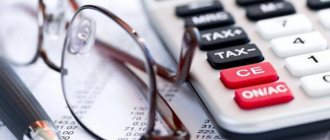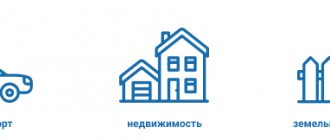In Russia there is a fairly large list of various taxes. With the development of the economy and according to the current financial situation, this list is constantly being adjusted: amendments are made to existing taxes, some taxes are abolished, and some, on the contrary, are just being introduced. Thus, in 2014, the so-called luxury tax was introduced into our tax system.
List of expensive cars for 2021
Every year, no later than March 1, the Ministry of Industry and Trade publishes on the official website a list of passenger cars for which transport tax is paid at an increased rate. In 2021, another 87 cars were added to the list.
The document lists brands, models (versions), engine type and size, number of years since the year of manufacture. Cars are grouped by average cost, starting from 3 million rubles. The cost is calculated using formulas from the Procedure approved by Order of the Ministry of Industry and Trade No. 316 of February 28, 2014.
It doesn't matter how much you actually paid for the car when you bought it. If you find it in the List, to calculate the tax you need to apply a multiplying factor - from 1.1 to 3.
Tax deduction
Modern legislation allows you to return tax on the purchase of an apartment in 2021 in the same way as in previous years. Articles 218 – 221 of the Tax Code of the Russian Federation describe all types of tax breaks, as well as the conditions under which they can be used. Article 220 of the Tax Code of the Russian Federation is devoted to property deductions.
The essence of a tax deduction is to reduce the tax base. Russian taxpayers who receive income subject to personal income tax at a rate of 13% can take advantage of this right. Currently, the state has set a limit on refunds depending on the value of residential real estate. Thus, the return will be:
- up to 260,000 rubles - with an apartment cost of up to 2,000,000 rubles, if mortgage funds were not raised;
- up to 390,000 rubles - for an apartment cost of up to 3,000,000 rubles, if mortgage funds were raised.
By the way, you need to take into account that when making calculations based on cadastral prices, there is a rule for reducing the taxable area, according to Art. 403 Tax Code of the Russian Federation:
- for rooms - 10 m²;
- for apartments - 20 m²;
- for houses - 50 m².
Procedure and formula for calculating transport tax
Starting with reporting for 2021, the transport tax declaration has been cancelled. But organizations still have the obligation to independently calculate and pay it. Since 2021, tax inspectorates have been sending out letters with calculated transport tax. You can check your calculations with the Federal Tax Service and, if necessary, challenge the tax authorities’ information within 10 days from the date of receipt of the message.
Organizations must transfer advance payments, and at the end of the year - calculate and pay the difference between the amount of the annual tax and the advances paid on it. Local authorities in the regions can cancel advance payments, then only the annual tax needs to be paid.
The tax is calculated separately for each vehicle using the following formula.
You need to substitute the values for your cars into it:
- tax base - engine power in horsepower;
- tax rate - can be viewed on the Federal Tax Service website by selecting transport tax, year of manufacture of the car and your region. Rates may differ, since constituent entities of the Russian Federation have the right to change them;
- coefficient Kv - coefficient of vehicle ownership. Apply when a car is registered or deregistered in the quarter or calendar year for which the tax is calculated;
- coefficient Kp - increasing coefficient. Applicable to passenger cars costing over 3 million rubles. from the list of the Ministry of Industry and Trade;
- 1/4 - for calculating the advance (quarterly) payment. If there are no advance payments in the region, this coefficient does not need to be applied.
World practice
The interest on super-profitable property is valid in America and European countries. Back in the early 90s, the United States introduced a tax on luxury goods, but most millionaires began to park planes and yachts in neighboring countries and make purchases abroad in order to circumvent the taxation.
European countries pay mainly for expensive housing , and in England, if the house is rented out, the tax percentage increases. For the ownership of a mansion over 500 square meters, the Swiss will have to pay the state about 15 thousand euros per year.
Some Australian states have introduced an additional charge for the quality of the land on which the property is located, in addition to the annual housing fee.
Wealthy Chinese pay into the treasury with every luxury purchase, be it perfume, wine or a penthouse.
As a result, they make most of their purchases outside their home country, for example, in Europe.
For a Chinese woman, buying a fur coat or jewelry in France is 70% more profitable than at home.
What items are considered luxury?
Luxuries:
- Airplane, car, helicopter, boat, yacht from 3 million rubles and above.
- Land plots, houses, apartments, dachas and other buildings worth over 15 million.
Experts discussed the possibility of including in the list works of art, pieces of furniture, clothing and precious metals and stones exceeding three hundred thousand rubles per item. However, we encountered difficulties in administering the listed values, so they were left without attention in the adopted legislation.
Vehicles produced less than a year ago, priced from 3 to 5 million, are subject to a coefficient of 1.5 . A tax multiplied by 1.3 is paid by owners of cars of the same value with an age of one to two years from the date of issue.
The fee for a car age from two to three years is multiplied by 1.1 . For owners of cars produced no more than five years ago, with a cost of five to ten million rubles, a double tax .
A car that is no more than 10 or 20 years old and costs from ten to fifteen or more million rubles is subject to a threefold tax .
Important! To calculate the cost of the contribution, you need to multiply the multiplying factor by the basic transport tax rate.
Water transport and private aircraft per unit of equipment will cost the owner ten percent of the subsistence level. Motorboats and open boats less than 6 meters in length are not subject to tax.
How to determine the multiplying factor for expensive cars
- Find your car in the list of the Ministry of Industry and Trade by model (version), type and engine size.
- Calculate how many years have passed since the vehicle was produced. The age of the car is calculated in calendar years as of January 1 of the year for which the tax must be paid. The year of manufacture is not taken into account. The year for which the tax is paid is included in the calculation. For example, the age of a 2021 car when calculating tax for 2021 is 5 years.
- Check to see if the age of your vehicle is listed in the last column of the listing. If not, the transport tax must be calculated without a multiplying factor.
- If the description of the car matches, look in which section it is located. The coefficient by which the transport tax should be increased depends on the cost category.
Types of property
Everything that a person owns is divided into two large types - immovable and movable. More specific information is reflected in Article 130 of the Civil Code of the Russian Federation.
Real estate includes:
- Plots of land.
- Buildings and structures, including unfinished construction.
The main feature of this type of property is a strong connection with the land. In this case, affiliation and purpose do not play a role.
Real estate also includes aircraft and sea vessels subject to state registration, including inland navigation. This also includes residential and technical buildings and parking areas for vehicles.
There is no clear list of movable property approved by law. This includes everything that is not real estate. Examples: cars, clothing, securities, money, jewelry.
The current legislation determines what is the object of taxation. This includes all movable and immovable property, including those in temporary use, on the balance sheet of legal entities or in the ownership of people. At the same time, an exception has been made for some species.
The following property is not subject to tax:
- Plots of land and other natural objects, such as bodies of water or forests.
- Property that belongs to authorities under the terms of operational management. This rule applies to authorities in which military or equivalent activities are carried out for the purpose of ensuring security and law and order.
- Objects of cultural heritage - monuments, memorials, sculptures, works of painting.
- Nuclear installations used for scientific activities, as well as sites of materials and waste of this nature.
- Icebreakers and nuclear service vessels.
- Space objects.
- Vessels that are registered in the international registry. It is contained in Article 33 of the Merchant Shipping Code of the Russian Federation dated April 30, 199 No. 81-FZ.
- Objects with a limited useful life, specified in the Decree of the Government of the Russian Federation of January 1, 2002 No. 1 “On the Classification of fixed assets included in depreciation groups.”
All specified types of property are not subject to tax.
Calculation example
Since 2021, an organization from the Yaroslavl region has owned a Lexus LX 450D 4.5 Standard passenger car:
- year of release - 2017;
- engine capacity - 4461 cubic meters. cm.
- maximum power - 272 hp. With.
- The fuel used is diesel.
When calculating tax for 2021, 4 years have passed since the year of issue, that is, no more than 5 years. Lexus is included in the List of Expensive Cars (line No. 347) and is in the section with an average cost of 5 to 10 million rubles.
Calculation of transport tax.
- In the Yaroslavl region for passenger cars with an engine power of 250 hp or more. With. The tax rate is set at 150 rubles. with every horsepower.
- Increasing factor - 2.
- The ownership coefficient will not be included in the calculation since the car was registered with the organization during the entire tax period.
- Transport tax for 2021 = 272 l. With. x 150 rub. x 2 = 81,600 rub.
- Advance payment for the 1st, 2nd or 3rd quarter of 2021 = RUB 81,600. : 4 = 20,400 rub.
Is there a luxury tax
The taxation procedure is regulated by special regulatory legal acts. However, such a concept as luxury does not apply to real estate. That is, various bills were previously initiated, but they were not approved.
Legislative framework
The main regulatory act that regulates issues of this nature is the Tax Code of the Russian Federation. It determines not only the procedure for the entire tax collection procedure, but also the range of payers and the amount of payments.
How to calculate transport tax for less than a month
In this case, to calculate the transport tax, you need to apply the ownership coefficient, which is calculated as the quotient of dividing the number of full months during which the vehicle was registered to the payer by 12 months. The resulting Kv value is rounded to four decimal places.
When calculating the ownership coefficient, the month of registration or de-registration is taken as a full month if the car:
- registered until the 15th inclusive;
- deregistered after the 15th.
Let's assume the car was sold and deregistered on March 12, 2021. The month of deregistration is not taken into account, since it occurred before the 15th.
Kv = 2: 12 = 0.1667.
Transport tax for 2021 = 272 l. With. x 150 rub. x 2 x 0.1667 = 13,603 rubles.
Cadastral value
This category is a certain indicator - the actual cost of the property. It is established during professional inspections, taking into account the following points:
- Changes of a capital nature after extreme revaluation, for example due to repairs;
- Depreciation of real estate of a physical, natural nature;
- Deterioration of the surrounding space of a natural, physical nature, affecting the condition of the immovable object (for example, the land on which the house was built);
- Various other factors that can influence the value of the property (presence of hazardous enterprises near it, whether the necessary infrastructure is available).
Regional characteristics play an important role - in the city center the cost of housing will be higher than in remote areas (for example, in the region). In Moscow, real estate costs more than in other cities of the Russian Federation.
When and how to pay transport tax
Transport tax and advance payments for it are transferred to the Federal Tax Service at the place of registration of the car. Since 2021, payment deadlines have become the same in all regions. Organizations transfer advance payments no later than the last day of the month following the 1st, 2nd and 3rd quarters. Taking into account postponements due to weekends, these are 04/30/2021, 08/02/2021 and 11/01/2021. Tax for 2021 - no later than 03/01/2022.
Budget classification code (BCC) for payment of transport tax from organizations is 182 1 0600 110.
Individuals pay transport tax by December 1 of the following year.
Obligation to pay
In accordance with the law, the obligation to pay taxes is assigned to legal entities and individuals. This rule applies to branches and separate structural divisions of organizations. The requirements for an individual, in this case, are reaching the age of majority and having ownership rights to real estate.
The legislation defines categories of persons who are exempt from paying taxes. These include:
- Pensioners.
- Disabled people of the first and second groups.
- Knights of the Order of Glory;
- Heroes of the Russian Federation and the USSR.
- Military personnel who have retired, having served for twenty years or more, families of military personnel who have lost their sole breadwinner, spouses and parents of military personnel who died in the line of duty.
- WWII veterans.
- Disabled children.
- Persons affected by accidents at the Chernobyl nuclear power plant.
- Citizens using property to carry out creative activities.
- Persons who own buildings for economic purposes, the area of which does not exceed fifty square meters, provided that they are located on areas intended for agriculture, gardening and vegetable gardening.
This list is exhaustive. It should be noted that the region of residence of such categories does not matter. At the same time, local authorities have the right to exempt certain persons from paying taxes by their decision. Most often this affects large families and people with low incomes.
How to reflect transport tax in accounting
The accrual of transport tax is reflected in the credit of account 68 “Calculations for taxes and fees”. To do this, a separate sub-account “Calculations for transport tax” is opened for account 68.
The debit account depends on where and how the car is used:
- in main production - Dt 20 “Main production”;
- in auxiliary production - Dt 23 “Auxiliary production”;
- for general production purposes - Dt 25 “General production expenses”;
- for management purposes - Dt 26 “General expenses”;
- in trading activities - Dt 44 “Sales expenses”;
- does not participate in the main activities of the organization - Dt 91.2 “Other expenses”.
For example, for a car that an organization leased, if this is not its main type of activity, you need to make the following entry:
Dt 91.2 “Other expenses” Kt 68 subaccount “Calculations for transport tax” - transport tax is accrued (advance payment of tax).
Tax exemption options
Certain immovable properties are not subject to the fee:
- Facilities financed from the state budget.
- Family-type orphanages.
- Dormitories.
- MAFAS, non-residential buildings in markets.
- Residential/non-residential buildings in the resettlement zone.
- Residential/non-residential real estate in the exclusion zone.
- The property is residential but uninhabitable.
- Real estate owned by orphans.
- Residential property owned by children without parental care.
- Real estate owned by disabled children raised by only one parent, for example, by mothers - no more than one dwelling.
According to the law, the following categories of people are recognized as taxpayers:
- Organizations;
- Individual entrepreneurs;
- Individuals who own a taxable object from the list specified in Article 333.44 of the Tax Code of the Russian Federation.
The following citizens are not recognized as taxpayers:
- Disabled people of WWII, various combat operations;
- Heroes of the Russian Federation/USSR, full holders of the Order of Glory;
- Laureates of Russian state awards in various fields (science, technology, art, literature, etc.), Nobel Prize.
Changes to the tax program in 2021
Previously, as a result of purchasing a two-room housing in the city in the central lands, a resident paid 500 rubles to the budget. tax, upon completion of the new reform, the tax amount will increase to 5 thousand rubles. annually (even more). The basis of taxation will be the cadastral value (and not the inventory value), which can bring real estate as close as possible to its market price.
Dimensional parameters of the tax amount are 0.1-2% of the cadastral valuation. This taxation is not uniform for owners of different real estate options; it will be updated over a period of 5 years, taking into account research by independent experts.
This fee applies to the following categories of citizen-owners:
- Unfinished housing (residential);
- Garages, parking spaces;
- Rooms, apartments, other housing;
- Centers containing at least 1 residential premises;
- Domestic buildings up to 50 square meters located on land where dacha work and gardening activities are carried out.
In addition, property owners will be required to provide tax officials with accurate information about the property they own. Otherwise (in a situation of data falsification, etc.) they face penalties of 20% of the tax amount. The list of preferential categories of citizens will remain the same in 2021, there will be no changes in it.
Who doesn't pay?
There are no preferential categories in this case. Therefore, it should be taken into account that only individuals who own real estate whose value is within one million rubles do not pay luxury tax.
Such a solution has too many disadvantages. This is due to the fact that the owners of real estate with the mentioned value may be both pensioners and disabled people.
Although the law has sound reasons, this issue is especially relevant now, when the value of real estate is rising significantly, especially against the backdrop of various economic unrest and the situation in the country and the world.







